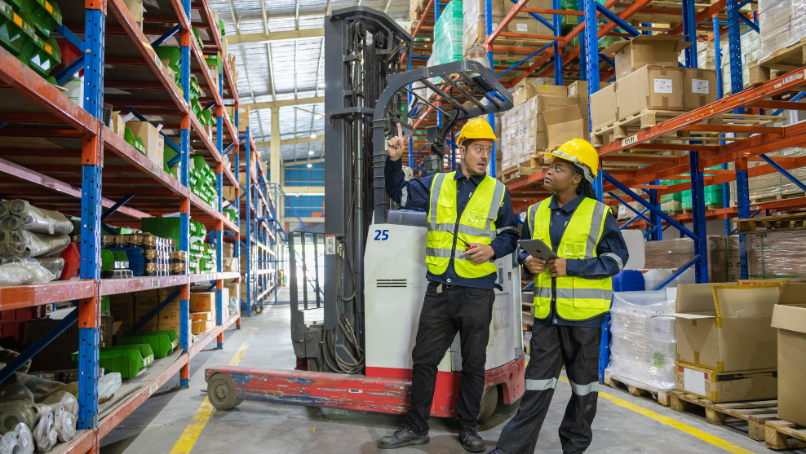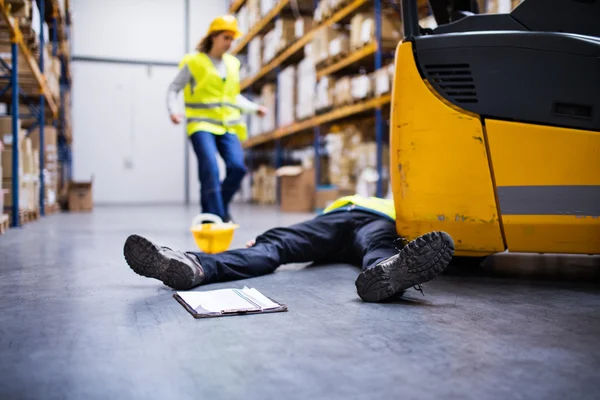

August 3, 2023
Forklifts are indispensable in modern industries for efficiently moving heavy loads and materials. They have become an integral part of warehouses, construction sites, manufacturing facilities, and various other workplaces. However, with their power and utility come significant hazards that can lead to accidents, injuries, and even fatalities if not effectively managed. It is crucial for employers, operators, and pedestrians to be aware of these forklift hazards and adopt appropriate control measures to ensure forklift safety.
1. Forklift Tip-Overs
One of the most prevalent forklift hazards is tip-overs. Forklifts have a high center of gravity due to the heavy loads they carry, making them prone to tipping if operated incorrectly. Factors such as sharp turns, uneven surfaces, overloading, or improper counterbalance can lead to a tip-over.
Control Measures:
2. Pedestrian Collisions
Forklifts and pedestrians often share the same workspace, increasing the risk of collisions. Pedestrians can be difficult for forklift operators to spot, especially when they are operating in reverse or carrying large loads obstructing their view.
Control Measures:
3. Improper Load Handling
Incorrectly managing loads is a major forklift hazard that can result in property damage, injuries, or fatalities. When loads are not secured properly, they can fall off during transport, endangering nearby workers.
Control Measures:
4. Lack of Forklift Training
Insufficient training of forklift operators is a significant contributing factor to accidents. Untrained or inadequately trained operators may not fully grasp the complexities of forklift operation, leading to poor decision-making and increased risks.
Control Measures:
5. Lack of Maintenance
Neglecting regular maintenance and inspections can lead to mechanical failures and breakdowns, resulting in accidents and injuries.
Control Measures:
6. Falls from Forklifts
Falls from the elevated platform of a forklift can lead to severe injuries or fatalities. This often occurs when operators use the lift as an aerial work platform without adequate fall protection.
Control Measures:
7. Rollover Protection Systems (ROPS) and Seat Belts
Rollover accidents are particularly dangerous and can lead to severe injuries or fatalities. Implementing Rollover Protection Systems (ROPS) on forklifts can significantly reduce the risk of injuries in case of a tip-over. ROPS are structures designed to provide a protective zone around the operator, preventing them from being crushed in the event of a rollover. Additionally, seat belts are essential safety features that must be worn at all times. Seat belts keep the operator securely positioned within the protective zone, reducing the likelihood of being thrown from the forklift during a rollover.
8. Adequate Lighting and Visibility
Proper lighting is crucial in ensuring both the safety of forklift operators and pedestrians in the workplace. Adequate lighting allows operators to see potential hazards clearly, including pedestrians and obstacles. Moreover, forklifts operating in areas with poor lighting should be equipped with additional lighting fixtures to enhance visibility.
9. Use of Backup Alarms
Backup alarms are an effective warning system that alerts pedestrians and other workers when a forklift is moving in reverse. The audible signal acts as a safety reminder, helping pedestrians to be aware of nearby forklift movements and take appropriate precautions.
10. Traffic Management and Signage
Proper traffic management within the workplace is essential for preventing accidents involving forklifts. This includes establishing clear traffic patterns, one-way lanes, and speed limits. Well-placed signs and floor markings can help direct pedestrian traffic and remind both pedestrians and forklift operators of safety protocols and potential hazards.
11. Operator Fatigue and Ergonomics
Forklift operators may experience fatigue during long shifts, which can impair their ability to operate the forklift safely. It is crucial for employers to monitor and manage work schedules to prevent operator fatigue. Additionally, ergonomic considerations are essential to ensure operator comfort and reduce the risk of repetitive strain injuries. Adjusting seat positions and controls can help improve operator visibility and overall safety.
12. Extreme Weather Conditions
Weather conditions can impact forklift operation and increase hazards. Rain, snow, ice, or strong winds can affect traction, visibility, and stability, making forklift operations more challenging. Operators should receive training on how to adjust their driving techniques based on weather conditions, and employers should have protocols in place for extreme weather situations.
13. Restricted Areas and Hazardous Zones
Some areas in the workplace may be deemed off-limits to forklifts due to safety concerns. These areas can include loading docks with open edges, elevated platforms, flammable material storage areas, or areas with poor visibility. Proper barriers, signs, and access control measures should be in place to prevent forklift entry into restricted zones.
14. Reporting Near-Miss Incidents
Near-miss incidents should be reported and investigated, even if no injuries or damage occurred. Learning from near misses can help identify potential hazards and prevent accidents from happening in the future.
15. Regular Safety Training and Toolbox Talks
Continuous safety training is essential for maintaining a strong safety culture in the workplace. Conduct regular toolbox talks, safety meetings, and refresher training sessions to reinforce safety protocols and keep employees updated on best practices.
Forklifts play a vital role in modern industry, but they also pose significant hazards that must be taken seriously. Employers, operators, and pedestrians must be aware of the most common forklift hazards and the control measures necessary to mitigate these risks. By implementing proper forklift safety precautions and adhering to best practices, workplaces can ensure the safety of their workers and reduce the likelihood of forklift injuries and accidents.
Post Tags :
Testimonials
Copyright © 2025 Rapid Forklift Training